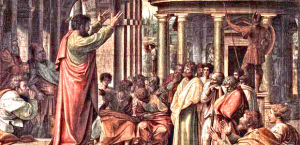 Saint Justin
Saint Justin
Martyr (100-167)
Feast – June 1st
Jesus then said to those Jews who believed in him, “If you remain in my word, you will truly be my disciples, and you will know the truth, and the truth will set you free.” Jesus answered them, “Amen, amen, I say to you, everyone who commits sin is a slave of sin. A slave does not remain in a household forever, but a son always remains. So, if a son frees you, then you will truly be free. (John 8:31-36)
To search for truth in the modern world, we have access to many sources of news and information such as newspapers, television, and radio. Through the internet we have access to scientists, highly educated experts, and commentators “who know better.” We pick and choose which sources we prefer and form our opinions. Many youths view the government as an extension of their parents, so they are happy to support the idea of a free education, including free college and low-stress life. As children become adults, ideas from their youth remain in their hearts and heads. Many blindly follow those who promise an easy life, ignoring reality and slavishly follow their masters and gods.There is no room in their lives for the one true God, the only source of truth and wisdom.
“Blessed are those who hear the word of God and observe it.” (Luke 11: 28)
Employing the words of our Lord from Matthew 7:15-18 “Beware of false prophets, who come to you in sheep’s clothing, but underneath are ravenous wolves. By their fruits you will know them. Do people pick grapes from thornbushes, or figs from thistles? Just so, every good tree bears good fruit, and a rotten tree bears bad fruit. A good tree cannot bear bad fruit, nor can a rotten tree bear good fruit,” we can differentiate honest leaders from snake oil salesmen.Few people actively follow this divine method, effectively walking in darkness; their faith withers and churches in crowded cities become empty.
This is not a modern phenomenon, a new problem to be solved. Throughout history there are legions of crooks and manipulators preying on the ignorance of the general population; but those who truly look for the truth, find it, bear good fruits and enjoy their reward in heaven. The most renowned truth seeker is St. Augustine, a Doctor of the Church and Bishop of Hippo, but there were many others like him who endured a confused pagan world and found the truth in Catholic Church. One of these lesser-known truth seekers is St. Justin, an apologist, martyr, and stalwart defender of the Catholic faith.
St. Justin was born around the year 100 at Flavia Neapolis (modern-day Nablus) near the ancient biblical city of Shechem in the Palestinian province of Samaria. His parents were Greek-speaking descendants from a diplomatic community that had been sent as colonists to that region of the Roman Empire.
His father followed the Greek pagan religion and raised his son to do the same. He provided St. Justin with an excellent education in literature and history. Knowing history and human nature is one thing, but understanding them requires knowledge of the truth.
As a young man St. Justin started his search for truth in the various schools of philosophy spread throughout the empire. He first tried the school of Stoics, philosophy of life that maximizes positive emotions, reduces negative emotions and helps individuals hone their virtues of character to achieve happiness.
Then he attended a school of a Peripatetic philosopher conducting philosophical and scientific inquiries, but he was put off because the philosopher was too eager for his fee. After that he went to hear a Pythagorean philosopher who demanded that he must first learn music, astronomy, and geometry.
Over time he became frustrated with the professional philosophers, their intellectual arrogance and limitations, as well as their apparent indifference to God.
After encountering a Platonist thinker who had recently settled in his city, he adopted Platonism which affirms the existence of abstract objects in a third realm distinct from both the sensible external world and from the internal world of consciousness. He described those days in his Dialogue with Trypho “And the perception of immaterial things quite overpowered me, and the contemplation of ideas furnished my mind with wings, so that in a little while I supposed that I had become wise.”
At the same time, he had admired Christians from a distance because of the beauty of their moral lives. As he writes in his Apologies: “When I was a disciple of Plato, hearing the accusations made against the Christians and seeing them intrepid in the face of death and of all that men fear, I said to myself that it was impossible that they should be living in evil and in the love of pleasure.”
One day, while he was walking by the seashore, meditating a majestic old gentleman, possibly a Syrian Christian, engaged him in a dialogue about God. When St. Justin confess that the ancient philosophers taught nothing certain about God, the elderly man urged him to study the Jewish prophets and told St. Justin that these authors had not only spoken by God’s inspiration, but also predicted the coming of Christ and the foundation of his Church, being more reliable than the reasoning of philosophers. The man told St. Justin: “There existed, long before this time, certain men more ancient than all those who are esteemed philosophers, both righteous and beloved by God, who spoke by the Divine Spirit, and foretold events which would take place, and which are now taking place. They are called prophets. These alone both saw and announced the truth to men, neither reverencing nor fearing any man, not influenced by a desire for glory, but speaking those things alone which they saw and which they heard, being filled with the Holy Spirit. Their writings are still extant, and he who has read them is very much helped in his knowledge of the beginning and end of things, and of those matters which the philosopher ought to know, provided he has believed them. For they did not use demonstration in their treatises, seeing that they were witnesses to the truth above all demonstration, and worthy of belief; and those events which have happened, and those which are happening, compel you to assent to the utterances made by them, although, indeed, they were entitled to credit on account of the miracles which they performed, since they both glorified the Creator, the God and Father of all things, and proclaimed His Son, the Christ [sent] by Him: which, indeed, the false prophets, who are filled with the lying unclean spirit, neither have done nor do, but venture to work certain wonderful deeds for the purpose of astonishing men, and glorify the spirits and demons of error. But pray that, above all things, the gates of light may be opened to you; for these things cannot be perceived or understood by all, but only by the man to whom God and His Christ have imparted wisdom.”
Moved by the aged man’s argument, St. Justin renounced both his former religious faith and his philosophical background. The Scriptures, ascetic lives of the early Christians, and the heroic example of the martyrs convinced him of the moral and spiritual superiority of Christian doctrine and led St. Justin from the inadequacy of human reason to the light of faith. Baptized around the age of 30, he chose to re-dedicate his life to the service of the Divine. He wrote “I have resolved that in all I say, my only purpose will be to speak the truth; I will say it without fear or any other consideration, even if I should at the same hour be cut up in pieces.” It is believed that St. Justin was ordained a priest, or at least a deacon, but he continued to wear the type of cloak that Greek culture associated with philosophers. He traveled to Greece, Egypt, Asia Minor, and Italy, gaining many to Christ. He arrived in Rome and started his own school during the reign of Antonius Pius (138–161). At that time Emperor Antonius Pius introduced the important principle in criminal law that accused persons are not to be treated as guilty before trial.
On the same principle, around 150, St. Justin in The First Apology argued against the persecution of individuals solely for being Christian. He also provided the emperor with a defense of the philosophy of Christianity and a detailed explanation of contemporary Christian practices and rituals. He convinced the emperor to regard the Church with tolerance and impose the rule that accusations against Christians must require proof. He sought to convince the rulers of the Roman Empire that they had nothing to gain, and much to lose, by persecuting the Christians.
In 146 Governor of Britain Lollius Urbicus returned to Rome and took the prestigious post of praefectus urbi (Prefect of Rome). Under his jurisdiction the persecution of Christians intensified. In response St. Justin wrote The Second Apology, addressed to the Roman Senate, which was meant to expose the utter irrationality of the allegations and propaganda spread against the Christians, and to reveal the true reasons behind the recent persecutions under Urbicus.
In the reign of Marcus Aurelius, he wrote to the emperor, who was himself a philosopher and the author of the well-known “Meditations.” He tried to demonstrate the injustice of the persecutions, and the superiority of the Catholic faith over Greek philosophy. Justin emphasized the strength of his convictions by stating that he expected to be put to death for expressing them. He did indeed seal his testimony with his blood. In 167 after disputing with the cynic philosopher Crescens, St. Justin was denounced by the latter to the authorities, was tried, and together with six of his disciples was sentenced to death by the urban prefect Junius Rusticus.
The account of their interrogation has been preserved, for then as now, court stenographers wrote down the words of judges, witnesses and the accused, and the early Christians paid money for the right to copy the records, showing how Justin the philosopher became known as “St. Justin Martyr.”
“The Prefect Rusticus says: Approach and sacrifice, all of you, to the gods. Justin says: No one in his right mind gives up piety for impiety. The Prefect Rusticus says: If you do not obey, you will be tortured without mercy. Justin replies: That is our desire, to be tortured for Our Lord, Jesus Christ, and so to be saved, for that will give us salvation and firm confidence at the more terrible universal tribunal of Our Lord and Saviour. And all the martyrs said: Do as you wish; for we are Christians, and we do not sacrifice to idols. The Prefect Rusticus read the sentence: Those who do not wish to sacrifice to the gods and to obey the emperor will be scourged and beheaded according to the laws. The holy martyrs glorifying God betook themselves to the customary place, where they were beheaded and consummated their martyrdom confessing their Saviour.”
“We are slain with the sword, but we increase and multiply; the more we are persecuted and destroyed, the more are deaf to our numbers. As a vine, by being pruned and cut close, shoots forth new suckers, and bears a greater abundance of fruit; so is it with us.” – St. Justin Martyr
To this day, certain writings of Saint Justin are still extant and pertinent: The First Apology, The Second Apology, the Dialogue with Trypho, Exhortation to the Greeks, Discourse to the Greeks, and The Monarchy of the Rule of God.
References and Excerpts:
[1] CNA, “St. Justin Martyr,” Catholic News Agency. https://www.catholicnewsagency.com/saint/st-justin-martyr-486 (accessed Jun. 03, 2023).
[2] “St Justin, Martyr.” https://www.fministry.com/2017/06/st-justin-martyr.html (accessed Jun. 03, 2023).
[3] “Saint Justin, Martyr.” https://sanctoral.com/en/saints/saint_justin.html (accessed Jun. 03, 2023).
[4] “Justin Martyr,” Wikipedia. May 30, 2023. Accessed: Jun. 03, 2023. [Online]. Available: https://en.wikipedia.org/w/index.php?title=Justin_Martyr&oldid=1157774866#Veneration
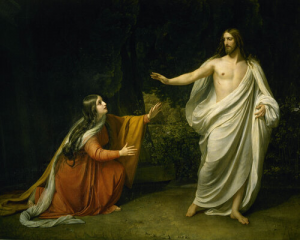 Saint Mary Magdalen
Saint Mary Magdalen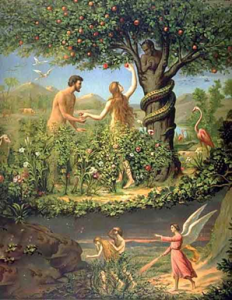
 In 1917, in Cova da Iria, Fátima, Portugal, the Blessed Virgin Mary “a Lady more brilliant than the Sun”, showed Herself seven times to three shepherd children – Lúcia dos Santos, Francisco and Jacinta Marto.
In 1917, in Cova da Iria, Fátima, Portugal, the Blessed Virgin Mary “a Lady more brilliant than the Sun”, showed Herself seven times to three shepherd children – Lúcia dos Santos, Francisco and Jacinta Marto.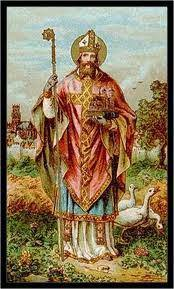 Saint Ludger
Saint Ludger
 For the average person this sounds like a dream requiring billions of dollars, billboards, radio and TV commercials, alongside an army of missionaries and volunteers going from house to house knocking on doors. A full-scale propaganda campaign.
For the average person this sounds like a dream requiring billions of dollars, billboards, radio and TV commercials, alongside an army of missionaries and volunteers going from house to house knocking on doors. A full-scale propaganda campaign.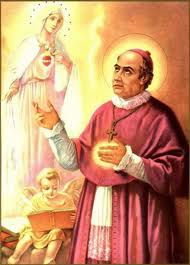 Saint Anthony Mary Claret
Saint Anthony Mary Claret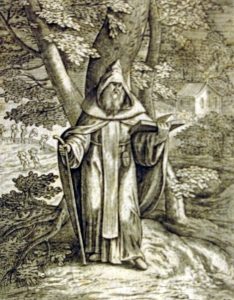 Saint Paphnutius
Saint Paphnutius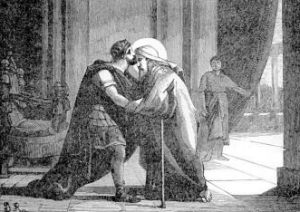 Since the majority of the bishops present belonged to the married clergy, imposing a requirement of celibacy on new appointees would appear hypocritical and undermine the prestige of the Church.
Since the majority of the bishops present belonged to the married clergy, imposing a requirement of celibacy on new appointees would appear hypocritical and undermine the prestige of the Church.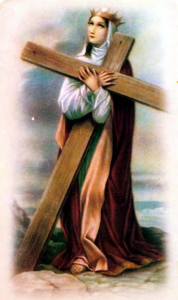 Saint Helena
Saint Helena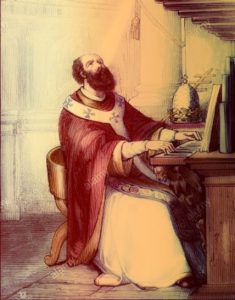 Saint Leo II
Saint Leo II Saint Justin
Saint Justin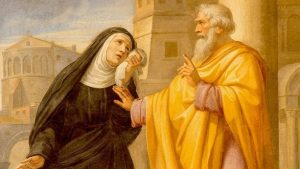 Saint Monica
Saint Monica